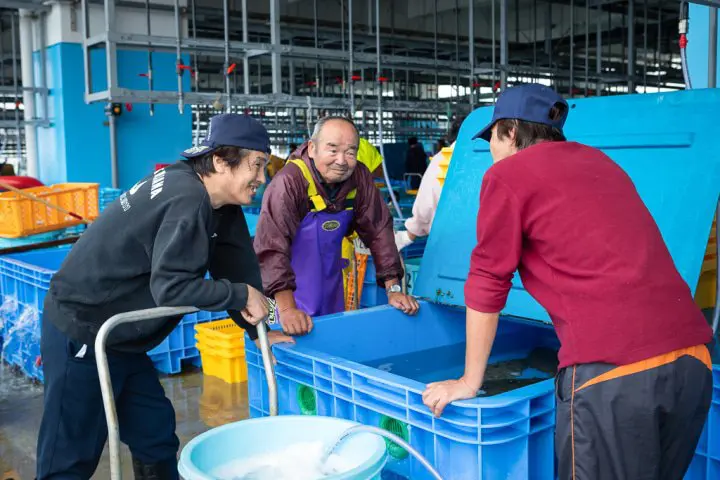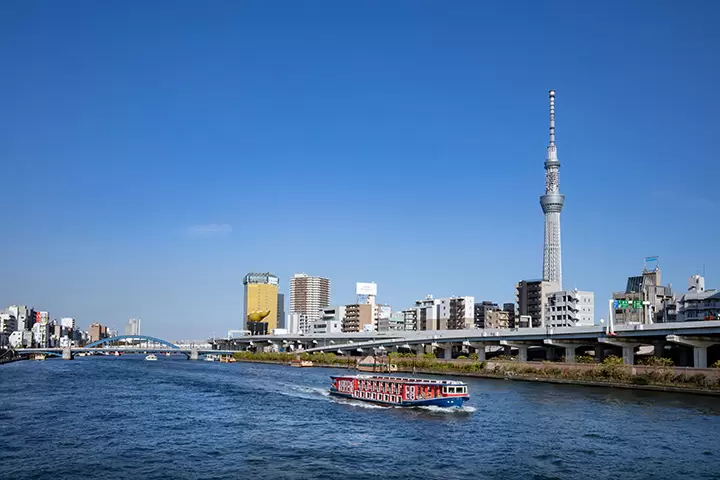Protecting Fukushima's Waters: The Current Situation of Local Fisheries

Ten years have passed since the Great Tohoku Earthquake and the nuclear power plant accident that occurred on March 11, 2011. We visited Soma City and interviewed the local people about the current situation of the fishing industry in Fukushima Prefecture.
The Current State of the Fishing Industry in Soma

Soma Haragama Wholesale Market (October, 2018). Picture courtesy of Fukushima Prefecture
Hamadori, the coastal area of Fukushima Prefecture facing the Pacific Ocean, is famous for its rich seafood catches throughout the year. The local marine products, called Joban-mono, are well-known for their freshness and fine taste.
On March 11, 2011, however, the Great Tohoku Earthquake occurred and was followed by an accident at the Fukushima Daiichi Nuclear Power Plant. This was the beginning of the fight against the rumors and misinformation harming the agriculture, forestry, and fishery products of Fukushima.
Ten years have passed since then, but what is the current state of the local fishing industry? MATCHA's writers visited Soma City to interview the local fishermen about their current situation.

Fresh flatfish at Soma Haragama Wholesale Market (October, 2018). Picture courtesy of Fukushima Prefecture
In 2010, Soma had a seafood catch of approximately 18,533 tons. Seine fishing prospered in this area, and the boats used to work in the offshore area throughout the night.
After the earthquake, the local fisheries exercised self-restraint. They resumed business on a trial basis from June 2012, focusing on species that were deemed safe. The prefectural office started to closely monitor the radiation levels of the seafood, and the number of species that were deemed safe gradually increased.
The catch in 2020 was approximately 3,645 tons. As the market recognized the safety, quality, and the quantity supplied by Fukushima, trial fishing ended in March 2021. The local fisheries are now preparing to return to business full-time.
The Fukushima Prefectural Federation of Fisheries Cooperative Associations set up two inspection facilities in the prefecture in order to screen the seafood catch for radioactive materials such as Caesium-134 and Caesium-137.
The safety standard is set at under 50 becquerel (Bq) per kilogram (*1), which is even stricter than the levels required by the Japanese government. Any seafood that surpasses the benchmark will not be distributed.
*1: The Japanese standard for food is 100 Bq per kg (kilogram). The international standard, CODEX, is 1,000 Bq per kg. This article describes the Fukushima standard, which is the most strict benchmark in the world.

Hokkigai (surf clam), a Fukushima specialty, at Soma Haragama Wholesale Market (October, 2018). Picture courtesy of Fukushima Prefecture
A Day at the Wholesale Market: Unloading the Catch, Auctions, and Shipment

Have you ever wondered what happens to the fish until it gets shipped?
A large number of Soma fishermen are engaged in offshore seine fishing, and prepare from the day before. They leave the port in the middle of the night, heading for the fishing ground located far away from land.
The fishermen return before noon and unload their catch. Afterwards, an auction is held at the market adjoining the port.

Soma Haragama Wholesale Market (October, 2018). Picture courtesy of Fukushima Prefecture
In this area, all family members participate in the process. While their husbands and sons are away fishing, the wives and daughters wait at the port to assist with unloading the fish.
After the fishermen return, all men and women work as a team to prepare for the auction.

Soma Haragama Wholesale Market (October, 2018). Picture courtesy of Fukushima Prefecture
"Once on land, the marine products are sorted by the women." This is a saying that spread in Soma, emphasizing the role played by women in the local fishing industry.

The fish are sorted through teamwork. Soma Haragama Wholesale Market (October, 2018). Picture courtesy of Fukushima Prefecture
To keep the fish as fresh as possible, the whole procedure is a race against time. The women sort them efficiently, according to species and size.
After being sorted out, the products are stored in containers and are sent to the auction.

Soma Haragama Wholesale Market (October, 2018). Picture courtesy of Fukushima Prefecture
After the auction, products are weighed by the fishery cooperative staff, and sent to supermarkets and eateries.

Preparing for the fish auction. Soma Haragama Wholesale Market (October, 2018). Picture courtesy of Fukushima Prefecture

The brokers waiting for the auction to start. Soma Haragama Wholesale Market (October, 2018). Picture courtesy of Fukushima Prefecture

Soma Haragama Wholesale Market (October, 2018). Picture courtesy of Fukushima Prefecture

After the auction, shipment is prepared. Soma Haragama Wholesale Market (October, 2018). Picture courtesy of Fukushima Prefecture
The wholesale market, which handles the landing, auction, and shipping, is very busy at all times.
Soma Fishermen: Preserving the Local Fishing Industry

The young generation of Soma fishermen (July, 2021)
Most Soma fishermen are born into a fishing family, and grow up watching their fathers work. Quite a few have started to work in their teens. They are passionate and sincere about preserving the local fishing industry and supplying fresh seafood.
"Before the earthquake, catching the fish came first for us. Now, the important thing is how to deliver the fish to our customers."
"After all those rumors related to the nuclear power plant accident, I wondered what would happen to Fukushima's fisheries. Can the fishermen stay in business? I worried about the future of the industry, and also about our home."
Despite the damaging rumors, the fishermen are looking towards tomorrow. Some are developing a relationship built on trust with the brokers and retailers who purchase the fish, in order to revitalize the industry.
The Secret Behind the Excellent Taste of Joban-mono

Matsukawa-ura Bridge (July, 2021)
A warm (Kuroshio) and cold (Oyashio) current meet along the Fukushima coast. Oyashio brings a large amount of plankton, which lures sardines and other fish to the area.
The vast fishing grounds allow various types of fishing, such as seine fishing in the shallow areas, bottom trawl fishing offshore, where the depth changes from 60 to 300 meters, and gillnet fishing as well. More than 200 species of seafood are caught throughout the year.
Fukushima supplied flatfish, which is caught all year round, along with sea bass, whitebait, hokkigai (surf clam), sea eel, and octopus, to the fish markets in the Tokyo metropolitan area. They were known as Joban-mono, and regarded highly due to their fine taste and freshness.

A delicious akamutsu (blackthroat seaperch) caught in Soma waters. Soma Haragama Wholesale Market (October, 2018). Picture courtesy of Fukushima Prefecture
From April 2021, Soma fisheries are moving on from trial to full-time fishing. The price of seafood is returning to the pre-earthquake levels, and the amount of fish already in circulation, such as flatfish, has gradually recovered.
In Conclusion

Soma Haragama Wholesale Market (October, 2018). Picture courtesy of Fukushima Prefecture
"Preserving the fishing industry of Soma" is not just a catchphrase but the motto of the local fishermen.
The people of Soma, a port city located in the northeastern part of Fukushima Prefecture, are striving at all times to provide fresh, fine-tasting, and safe seafood.
Sponsored by Fukushima Prefecture.
In cooperation with Soma Haragama Wholesale Market and its members.
Read also
MATCHA's promotional account for corporate and local government advertising. We aim to provide useful information to our readers in an enjoyable manner.


































![[Just a short distance from Nagoya] Popular Taiwanese YouTuber Alan tours Aichi, Tokoname!](https://resources.matcha-jp.com/resize/720x2000/2026/01/08-255181.webp)